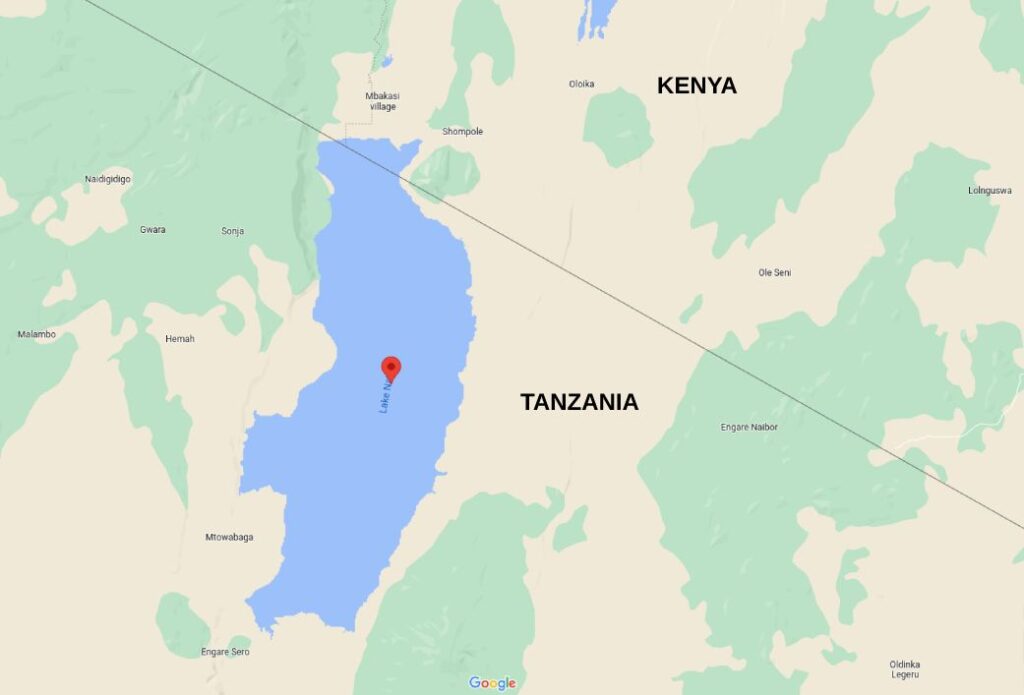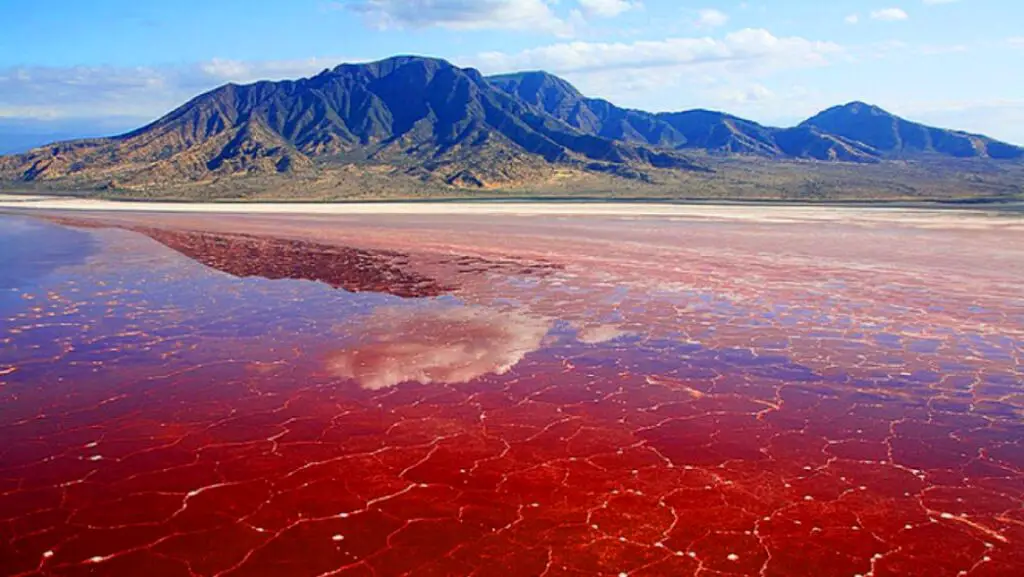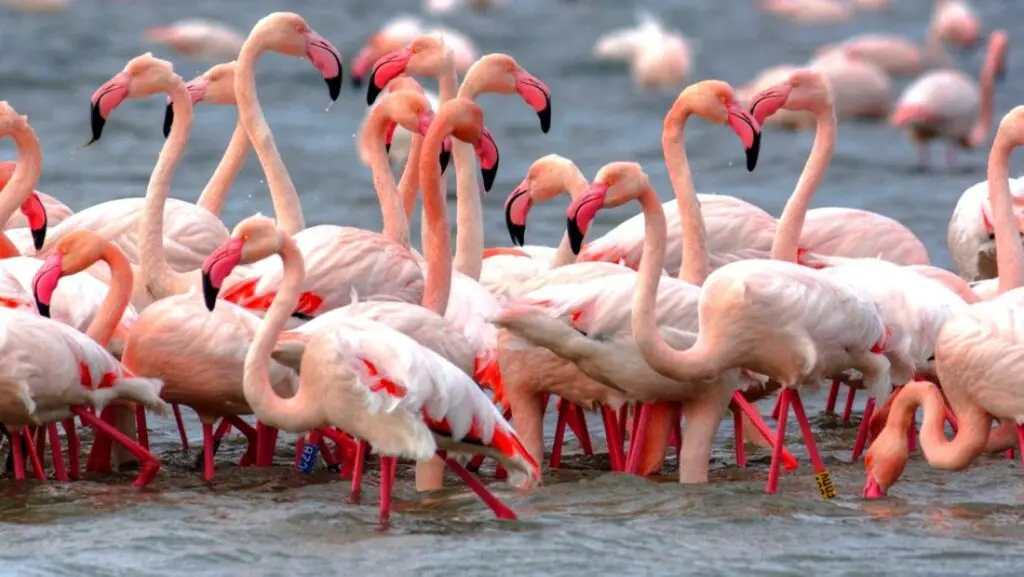Lake natron popularly famous as the lake that turns animals to stone, is located in the Northern Tanzania, on the edge of the world-famous Serengeti.
The first time you hear about it, it might seem like a cursed place or some spell had been cast on it, But trust me nothing of that sort is wrong with lake natron.
The effect it has on animals and birds is purely scientific, but before we dive into the reason for its deadly nature.
Lets know about it’s location and surroundings along with how it was first discovered.
This alkaline salt-and- soda lake is not like any other place on Earth. Years of water evaporation and its close proximity to and active volcano has led to a high concentration of minerals and the close by geysers make the lake in hospitable.
The water has an extremely high pH level as high as 10.5 and could reach a pH of greater than 12. It contains lethal amounts of sodium carbonate and ammonia which are typically found in cleaning solutions.
The temperatures tend to stay at around 42 degrees Celsius (108 degrees Fahrenheit) all year round, which is much hotter than most bodies of water.
Where is lake Natron?
Lake Natron is located in the north of Tanzania. This lake is roughly 57 km long and 22 km wide, a small portion of the lake also stretches over to Kenya as seen in the image below.
It is very shallow in depth as it’s deepest point is around 9 to 10 feet only.

How Was Lake Natron Discovered
The presence of Lake Natron was always know by the native Maasai people who live in the northern part of Tanzania. The lake gained popularity after a photographer by the name Nick Brandt released images of animals around the lake that seem to have been turned into stone.
In 2011 Nick Brandt came across this lake and was instantly baffled by the site; what he found was dead animals and birds with a chalky layer of sodium carbonate along the shorelines of the lake.
He quickly grabbed his camera and started clicking pictures after placing the dead animals and positioning them as if they were alive.
Why is Lake Natron so Deadly?

Lake Natron is said to be one of the most dangerous lakes in the world. Unlike other lakes it has high levels of natron (mixture of sodium carbonate and baking soda) which makes it extremely alkaline in nature.
The pH level is as high as 10.5 which can cause burns to skin and eyes of animals, if that was not enough water temperature generally ranges from 40˚ to 60˚C.
Since there is no outflow of water and it receives irregular rainfall, the constant evaporation and a rare type of lava rich in sodium and potassium carbonates ran down the slopes of the Ol Doinyo Lengai volcano, has led to concentration of trona (sodium sesquicarbonate dihydrate) and natron (hydrated sodium carbonate) in the water making it very toxic.
Sodium carbonate and sodium bicarbonate salts calcify the bodies of the animals that die inside it.
Why is Natron Red in Color
Lake natron gets it’s distinct reddish color from the salt-loving Haloarchaea which are a type of cyanobacteria that creates algae blooms. These algae are present in abundance and are an important source of food for the flamingos
Lake Natron A Paradise for Flamingos

Surprisingly this poisonous lake of death has proved to be a paradise for flamingos. For a fact, more than 2.5 million lesser Flamingos breed here as a result 75 percent of the world’s population of Flamingos are born at this place.
It is not by chance that flamingos have chosen this place as their breeding ground, the uninhabitable conditions in and around this lake has made it a perfect place for breeding as there is little to no danger from predators.
These flamingos have a tough and scaly skin which prevents their feets from the bruning effect of the super-alkaline water, they can drink hot water from the nearby geysers.
If needed they can also filter water salt from the lake water with the help of special glands present in their head and drain it out from their nasal cavity.
You might have heard the term “you are what you eat” that is exactly the case with flamingos. A lot of plants produce natural pigments called carotenoids. These carotenoids are found in microscopic red algae present in the lake that brine shrimp eat.
As the flamingos feast on the abundant resource of red algae and shrimp their feathers turn pink as a result of metabolism.
10 Facts About Lake Natron
- Lake Natron water has an extremely high pH level as high as 10.5 and could reach a pH of greater than 12
- It gets its red color from the microscopic algae present in the lake
- Lake Natron can be seen from space
- Lake Natron is a very shallow lake with it’s deepest point being around 9 to 10 feet only
- It is a breeding ground for 2.5 million endangered Lesser Flamingos
- Lake Natron contains Sodium carbonate and sodium bicarbonate salts that calcify the bodies of the animals that die inside it.
- Water temperature of the lake can range from 40˚ to 60˚C
- Lake Natron is located in the north of Tanzania
- This lake is roughly 57 km long and 22 km wide
- The lake sits in the wake of Ol Doinyo Lengai, the only volcano on the planet to belch out one of Earth’s weirdest lavas called Natrocarbonatite.

